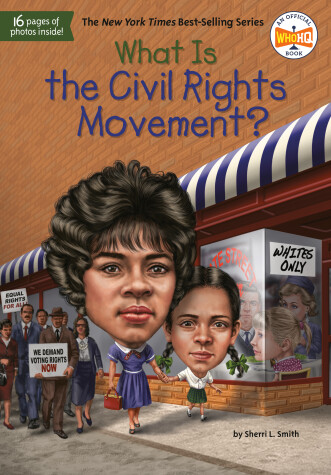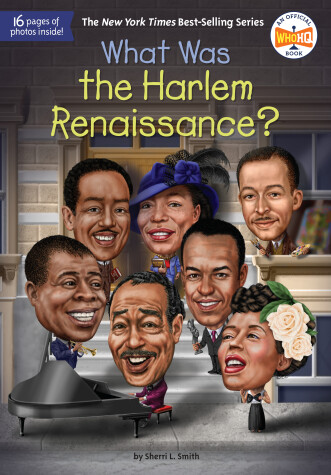What Was?
2 primary works • 3 total works
Even though slavery had ended in the 1860s, African Americans were still suffering under the weight of segregation a hundred years later. They couldn’t go to the same schools, eat at the same restaurants, or even use the same bathrooms as white people. But by the 1950s, black people refused to remain second-class citizens and were willing to risk their lives to make a change.
Author Sherri L. Smith brings to life momentous events through the words and stories of people who were on the frontlines of the civil rights movement of the 1950s and 1960s.
This book also features the fun black-and-white illustrations and engaging 16-page photo insert that readers have come love about the What Was? series!
Author Sherri L. Smith brings to life momentous events through the words and stories of people who were on the frontlines of the civil rights movement of the 1950s and 1960s.
This book also features the fun black-and-white illustrations and engaging 16-page photo insert that readers have come love about the What Was? series!
In this book from the #1 New York Times bestselling series, learn how this vibrant Black neighborhood in upper Manhattan became home to the leading Black writers, artists, and musicians of the 1920s and 1930s.
Travel back in time to the 1920s and 1930s to the sounds of jazz in nightclubs and the 24-hours-a-day bustle of the famous Black neighborhood of Harlem in uptown Manhattan. It was a dazzling time when there was an outpouring of the arts of African Americans--the poetry of Langston Hughes; the novels of Zora Neale Hurston; the sculptures of Augusta Savage and that brand-new music called jazz as only Duke Ellington and Louis Armstrong could play it. Author Sherri Smith traces Harlem's history all the way to its seventeenth-century roots, and explains how the early-twentieth-century Great Migration brought African Americans from the deep South to New York City and gave birth to the golden years of the Harlem Renaissance.
With 80 fun black-and-white illustrations and an engaging 16-page photo insert, readers will be excited to read this latest addition to Who HQ!
Travel back in time to the 1920s and 1930s to the sounds of jazz in nightclubs and the 24-hours-a-day bustle of the famous Black neighborhood of Harlem in uptown Manhattan. It was a dazzling time when there was an outpouring of the arts of African Americans--the poetry of Langston Hughes; the novels of Zora Neale Hurston; the sculptures of Augusta Savage and that brand-new music called jazz as only Duke Ellington and Louis Armstrong could play it. Author Sherri Smith traces Harlem's history all the way to its seventeenth-century roots, and explains how the early-twentieth-century Great Migration brought African Americans from the deep South to New York City and gave birth to the golden years of the Harlem Renaissance.
With 80 fun black-and-white illustrations and an engaging 16-page photo insert, readers will be excited to read this latest addition to Who HQ!
Reconstruction - the period after the Civil War - was meant to give newly freed Black people the same rights as white people. And indeed there were monumental changes once slavery ended - thriving new Black communities, the first Black members in Congress, and a new sense of dignity for many Black Americans. But this time of hope didn’t last long and instead, a deeply segregated United States continued on for another hundred years. Find out what went wrong in this fascinating overview of a troubled time.


